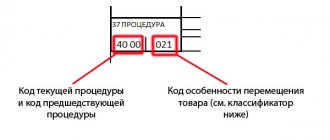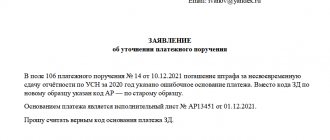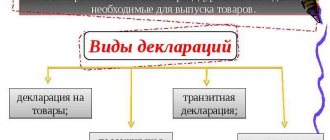Russian legal entities engaged in mutual trade with states that are members of the Eurasian Economic Union (and therefore the EAEU Customs Union) are required to submit to the Federal Customs Service (FCS) a statistical form for recording the movement of goods.
The Eurasian Economic Union (hereinafter referred to as the Union, EAEU) is an international organization for regional economic integration. Within the framework of the Union, freedom of movement of goods, services, capital and labor is ensured, and a coordinated, harmonized or unified policy is pursued in certain sectors of the economy
Currently, the following states are members of the EAEU:
- Republic of Belarus;
- The Republic of Kazakhstan;
- Russian Federation;
- Republic of Armenia;
- Republic of Kyrgyzstan.
Mutual trade refers to both the shipment of goods to the EAEU countries and the receipt of goods from these countries.
The statistical form for recording the movement of goods is submitted to the customs authority no later than the 10th day of the month following the month in which the goods were shipped (received). This is evidenced by the Decree of the Government of the Russian Federation dated January 29, 2011 No. 40 “On the organization of maintaining statistics of mutual trade of the Russian Federation with member states of the Customs Union within the framework of the EurAsEC.”
When and why to fill out the statistical form
When accounting for the movement of products between the Russian Federation and the countries of the EAEU (Armenia, Belarus, Kazakhstan, Kyrgyzstan), a statistical form is used on the official website of the Federal Customs Service. Mutual trade statistics are kept according to the norms of the Russian Federation Regulation No. 1329 dated December 7, 2015. Such a declaration is necessary to record the results of Russia’s foreign economic activities with member countries of the Customs Union.
Cases when organizations will have to fill out a declaration are listed in the table.
| When to fill | When not filled out |
|
|
Import operations
When you import, you bring a product from a foreign country for further use or sale in your country. In any case, import goods only through customs.
In import accounting, a difficult point is the formation of cost. Do not forget to include customs duties, fees, and delivery costs into the cost price. If you hired a person who represented your interests during the transportation and declaration of cargo, then also include the cost of paying for his labor in the cost price.
To account for the movement of imported goods and the formation of cost, you can use accounts 15 or 41.3 by opening subaccounts for them.
Due to constant changes in the exchange rate, the question arises: at what rate should goods be accepted for accounting? In total you have two options. The first is to take into account at the rate on the date of advance payment, if it was made. The second is at the rate at the moment of transfer of rights. The moment of transfer of rights is determined by the Incoterms rules.
Incoterms 2020
Since 2021, a new set of international rules, Incoterms 2020, has appeared. It can be applied from January 1, 2021, but you can continue to use the rules of Incoterms 2010, Incoterms 2000 and even earlier versions.
Incoterms 2021 identifies 7 rules for any transport and 4 for sea vessels. For example, in a contract involving delivery by truck, you can specify the following rules:
- EXW - ex-warehouse, delivery costs are transferred to the buyer at the moment when he picks up the goods from the recipient's warehouse.
- FCA is a free carrier. The supplier delivers the goods to the customer's carrier and pays all export payments, after which all risks and costs of delivery and import customs clearance are borne by the buyer. The FCA delivery basis provides two shipping options:
- A place that belongs to the seller (his warehouse, store, factory). Delivery is considered complete when the goods are loaded onto the vehicle designated by the buyer.
- A place that does not belong to the seller (port, terminal). In this case, it is considered that the shipment is made after the goods are loaded onto the carrier’s vehicle, paid for by the seller.
- According to the new rules of Incoterms 202, as part of an FCA delivery, it is possible to indicate in the sales contract that the buyer obliges the carrier to issue a bill of lading with an on-board entry. This will help avoid conflicts between the seller, buyer and carrier, which often arose when delivering by water.
- CPT - the supplier performs export customs clearance, delivers the goods to its carrier and pays the cost of its services. The buyer unloads the goods and performs import customs clearance. Risk passes to the customer upon delivery to the carrier.
- CIP - Similar to CPT, but insurance costs are borne by the seller. The seller is obliged to insure the goods against all risks (at least 110% of the cost of the goods). The parties may agree to a lower level of coverage.
- DPU - delivery to unloading place. The seller delivers the goods to the terminal, unloads them and pays export payments. And the import duty and delivery from customs are paid by the buyer himself. The transfer of risks to the buyer occurs after the seller unloads the vehicle at the terminal.
- DAP - delivery at point. The supplier delivers the goods to the agreed location, which is usually in the buyer's country, and pays export customs duties. Customer pays for unloading, import duties and taxes. The moment of risk transfer is unloading from the seller’s vehicle.
- DDP - full delivery to the client, that is, the seller pays all costs (export and import duties, clearance, loading, delivery, etc.) and bears the risks until the goods are delivered to the client.
Keep records of exports and imports using the simplified tax system in the Kontur.Accounting web service. Currency accounting and work instructions, taxes, automatic salary calculation and reporting in one service
For maritime transport, you can specify the following rules:
- FAS - free along the side of the ship. The costs of delivery to the agreed port are paid by the supplier. He also pays the export duty. The costs of loading on board the vessel, vessel freight (freight charges), duties and taxes are the responsibility of the buyer. Transfer of risks is the moment the seller transfers the goods to the carrier.
- FOB - free on board. In addition to FAS, the seller is responsible for the costs of loading the goods on board the vessel. The buyer delivers the goods to the unloading point and performs import customs clearance. The moment of risk transfer is loading on board the vessel.
- CFR - cost and freight. The supplier bears the costs of delivery to the agreed port, loading, freight and export payments. The point at which risk and expense pass is the movement of goods over the ship's rail. In fact, this is FOB, supplemented by the fact that the seller also pays for the delivery of cargo by sea to the buyer’s place. The risk passes when the consignment reaches the port of destination.
- CIF - Cost, Insurance and Freight. Similar to CFR, only the buyer pays for cargo insurance.
When receiving goods at customs, you will be faced with the need to determine the customs value. It will serve as the basis for determining duties, VAT and excise taxes. Customs value is the cost of the cargo under the contract plus all other costs (for loading, transportation, etc.).
Import VAT
Taxation also has its own subtleties when importing. Import transactions are generally subject to 20% VAT in 2021. If the sale of imported goods within the country is subject to a rate of 10%, then the corresponding VAT is charged when importing such goods. When implementing certain types of work (services) related to the import of goods, a 0% VAT rate is applied. It is important to pay VAT on time, since without this the goods will not be released from the temporary storage area. Penalties will begin to accrue for the delay.
Unlike domestic trade, the VAT tax base includes: the declared value of goods, customs duties and excise taxes. Don't forget to exercise your right and deduct VAT. To do this, observe the following points:
- the goods must be registered;
- imported products will be used to generate revenue, which is subject to VAT;
- expenses for the purchase of goods are confirmed by the primary source;
- VAT has been paid.
All of the above is appropriate for OSNO. When working on a simplified basis, VAT cannot be deducted. Depending on the type of simplified tax system, you have two options. The first is that in the simplified tax system “Income” the amount of VAT is included in the cost of purchased products. The second is that in the simplified tax system “Income - Expenses” the tax amount is included in expenses to reduce the simplified base.
Keep records of exports and imports using the simplified tax system in the Kontur.Accounting web service. Currency accounting and work instructions, taxes, automatic salary calculation and reporting in one service
When should I fill out and submit?
The deadline for submitting the declaration is no later than the eighth working day of the month following the month of shipment or receipt of goods. Here is the schedule for submitting statistical forms to customs authorities for 2020:
| Month of shipment/receipt | Deadline for submission |
| December 2019 | 20.01.2020 |
| January 2020 | 12.02.2020 |
| February | 12.03.2020 |
| March | 10.04.2020 |
| April | 18.05.2020 |
| May | 10.06.2020 |
| June | 10.07.2020 |
| July | 12.08.2020 |
| August | 10.09.2020 |
| September | 12.10.2020 |
| October | 12.11.2020 |
| November | 10.12.2020 |
| December | 20.01.2021 |
The reporting person has the right to fill out the form immediately after shipment or receipt of goods - it is not necessary to wait for the delivery date. If several deliveries under one contract in the reporting period were moved from one sender to one recipient, several statistical reports for each shipment or general statistics on the results of the execution of the agreement are allowed.
Export operations
Export operations are the opposite of import operations. Now you are exporting goods from your country. Similar to imports, all export transactions go through customs and are subject to duties.
Maintain export accounting separately from trade within your country.
Export VAT
In terms of exports, the VAT rate is more lenient than for imports and is equal to 0%. The right to apply such a rate must be confirmed. To do this, within 180 calendar days from the moment the cargo is declared at customs, provide the following documents to the tax office:
- foreign trade contract with a foreign buyer;
- bank statement confirming receipt of proceeds from the counterparty;
- a copy of the customs declaration with customs marks;
- copies of documents confirming the export of goods abroad.
For a complete list of documents, see Article 165 of the Tax Code of the Russian Federation. All these documents are submitted simultaneously with the declaration at a 0% rate.
If you received an advance payment for products, pay VAT on it. Once title to the item has passed to the buyer, you can request a refund of the amount paid. To do this, submit a separate tax return with the documents listed in Art. 165 Tax Code of the Russian Federation.
Don't forget about tax deductions. Art. 172 of the Tax Code of the Russian Federation regulates which amounts are subject to deduction:
- amounts of VAT on advances from foreign buyers that can be deducted after sale;
- VAT amounts paid to contractors for materials, works and services for the production of export goods.
Important! To deduct, you must keep separate records of “input” VAT on internal and external transactions. The following options can be offered for tax distribution:
- according to the amount of actual costs;
- by the share of shipped export products in the total production volume;
- in proportion to the cost of exported goods to the total cost of shipped products.
Income tax
The purpose of export is to generate revenue, which means it occupies an important place in the calculation of income tax. In practice, it has developed that export operations fall into the category of the main activity. Therefore, consider income and expenses in terms of two categories:
- for production and sales of products;
- non-operating (Chapter 25 of the Tax Code of the Russian Federation).
Income will be the proceeds from the sale of products. Despite the fact that your products will be paid for in foreign currency, recalculate the proceeds at the Central Bank exchange rate on the date of sale.
Keep records of exports and imports using the simplified tax system in the Kontur.Accounting web service. Currency accounting and work instructions, taxes, automatic salary calculation and reporting in one service
Exchange differences
The exchange rate of the ruble against other currencies changes daily. This can affect you both for the better and for the worse, so there are positive and negative exchange rate differences. Let's look at examples (the rates of the Central Bank of the Russian Federation are conditional!)
Example . Equator LLC plans to purchase a batch of tomatoes from a foreign partner. However, the company does not hold foreign currency. To remedy this, it was decided to purchase $5,000 from the bank. May 31 - a purchase order was sent to the bank, which reserved 355,000 rubles for the purchase. The currency itself was purchased on June 3 at the rate of 69.9925 rubles. The exchange rate of the Central Bank of the Russian Federation as of June 3 is 68.9831 rubles.
| date | Debit | Credit | Sum | Description |
| 31.05.2020 | 57 | 51 | 355 000 | Funds for the purchase of currency were reserved by the bank |
| 03.06.2020 | 52 | 57 | 5 000 × 68,9831 = 344 915,5 | Foreign currency has been deposited into the foreign exchange account |
| 03.06.2020 | 51 | 57 | 355 000 — 5 000 × 69,9925 = 5037,50 | Excessively reserved funds were returned to the account |
| 03.06.2020 | 91.2 | 57 | (69,9925 — 68,9831) × 5 000 = 5 047 | The negative exchange rate difference between the purchase rate and the Central Bank rate is reflected |
Example 2. Pyramid LLC bought laser engraving equipment for $3,000 on June 4 (Central Bank of the Russian Federation exchange rate - 68.3413 rubles). The debt to pay for the equipment is subject to revaluation. The exchange rate of the Central Bank of the Russian Federation dropped to 68.0313 rubles on June 30. This created a positive exchange rate difference, since the amount of our liabilities decreased.
| date | Debit | Credit | Sum | Description |
| 04.06.2020 | 08 | 60 | 3 000 × 68,3413 = 205 023,9 | Purchased equipment for laser engraving |
| 30.06.2020 | 60 | 91.1 | 3 000 × (65,5547 — 64,5) = 930 | A positive exchange rate difference is reflected, as the amount of debt has decreased |
How to fill it out correctly
The declaration for the movement of goods is filled out according to a unified form. It was approved in Appendix No. 1 of the RF PP No. 1329 dated December 7, 2015. All positions are filled in according to the rules for maintaining statistics from Resolution No. 1329.
There are two ways to fill:
- online - customs statistics in the personal account of a foreign trade participant;
- electronic - entering information into a unified declaration form on a PC.
To work in your personal account, you will need an electronic signature and confirmation of the organization.
If you fill out a declaration through your personal account, enter the information into the online form, check the information is correct, sign the document with an electronic signature and send it to the customs office.
But here are the rules for filling out paper documents (Appendix No. 2 to RF PP No. 1329 dated December 7, 2015):
- Prepare a declaration using a unified form.
- Indicate the reason: dispatch or receipt of products in the reporting month.
- Review and save the information.
- Wait for the system number.
- Print out the customs statistical form and have it signed by your manager. Stamp this.
Your customs representative
Filling out a statistical declaration is not a simple process and requires professional knowledge. The customs representative of TKS-group ODO will be glad to see every new client and will be happy to help you understand all the intricacies of customs legislation.
Even if you do not plan to use our service, you can always call and get a free consultation on the issue that interests you.
At the same time, TKS-group ALC is one of the most competent customs representatives in the Republic of Belarus, with more than 15 years of experience in the customs services market. We are an official company, our organization is included in the register of customs representatives of the State Customs Committee under number TA-0600/0000275.
How to punish for mistakes and violations
If you violate the deadlines for submitting customs statistics, you face administrative liability (Article 19.7.13 of the Code of Administrative Offenses of the Russian Federation). For violation of deadlines or distortion of reporting information, a fine will be issued:
- 10,000 - 15,000 rubles for officials, and in case of repeated violation 20,000 - 30,000 rubles;
- 20,000 - 50,000 rubles for legal entities, and 50,000 - 100,000 for repeated violations.
Unreliable information in customs statistical reporting includes distortions, arithmetic and logical errors, and violations of filling rules.










